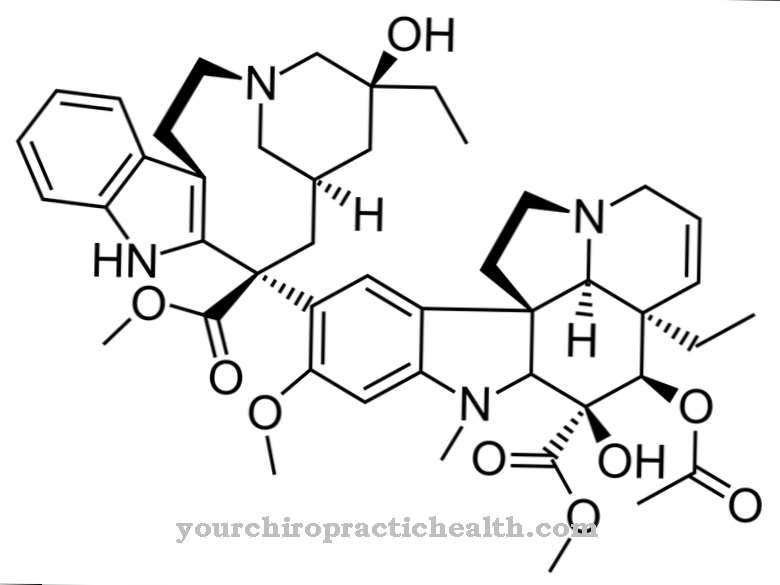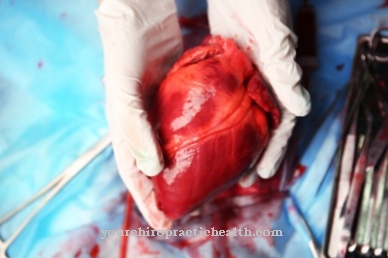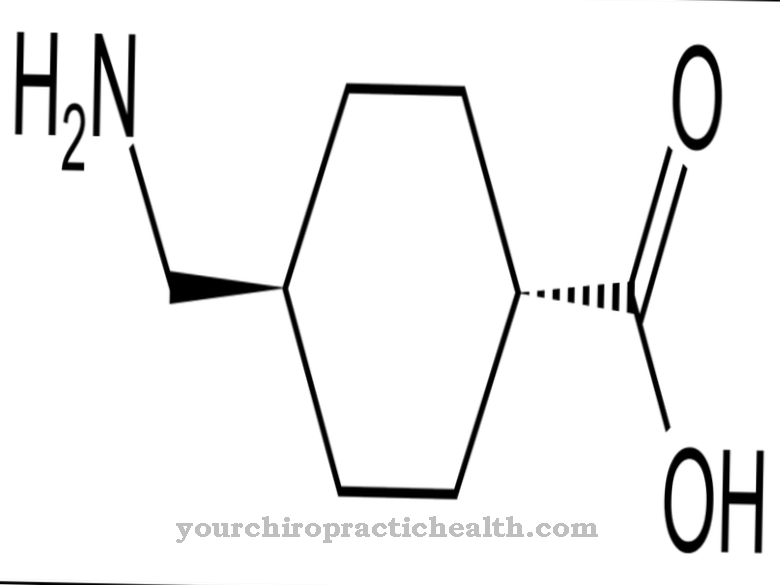Phenytoin is a drug from the class of anticonvulsants. Depending on the use, phenytoin is also counted among the antiarrhythmics.
What is phenytoin?

Phenytoin is a drug that is mainly used to treat epilepsy. The substance is also used to treat cardiac arrhythmias.
Phenytoin was first synthesized in 1908 by the chemist and university professor Heinrich Biltz. To do this, Biltz heated benzil and urea. After a rearrangement of the benzilic acid, phenytoin was created. Phenytoin is sold in Europe under the trade names Phenhydan®, Zentropil® or Epanutin®. Generic drugs are also available. Phenytoin is a hydantoin derivative. Hydantoins are saturated heterocyclic compounds and are in turn a derivative of imidazoles.
The bioavailability of phenytoin is good. The drug is metabolized in the liver. This metabolism is dose-dependent and the half-life of the drug therefore fluctuates. Phenytoin is mainly excreted via the kidneys.
Pharmacological effect
Phenytoin blocks sodium channels on the body's cells. The blockage of the channels and a delayed recovery after excitation of the cells prevent a rapid influx of sodium ions. Action potentials are triggered by the influx of sodium into the cells. On the one hand, if the influx of sodium is prevented, the action potentials do not rise as quickly. On the other hand, the action potential tales are shorter.
In addition to the reduced influx of sodium ions, there is also an increased outflow of potassium ions. Thus the stimulus threshold increases. In order for an action potential to be triggered, a much stronger stimulus must hit the target cell. The membrane potential is thus stabilized by phenytoin. In contrast to many other antiarrhythmics, however, the AV conduction to the heart does not affect phenytoin.
Medical application & use
Phenytoin is mainly used in the treatment of epilepsy. It is suitable as a long-term treatment for simple and complex partial seizures. Focal seizures start in a specific area of the brain and only ever affect one hemisphere. They can express themselves as muscle twitching, tingling sensations, feelings of warmth, numbness, flashes of light in front of the eyes or dizziness. Patients with complex partial seizures often lose consciousness.
Phenytoin is also administered for primarily generalized tonic-clonic seizures. These epileptic seizures are also known as grand mal seizures. In the case of status epilepticus, phenytoin is also approved for intravenous administration. Status epilepticus refers to long-lasting epileptic seizures. The seizures can also appear in a whole series, with the interval between the individual seizures being so short that those affected do not become conscious. A status epilepticus can, depending on its severity, cause severe damage and, in the worst case, even be fatal. In the case of generalized seizures of the absence type, the so-called petit mal seizures, however, phenytoin has no effect.
In exceptional cases, phenytoin is also used to treat neurogenic pain conditions. Due to the side effects that can occur during therapy with phenytoin, the drug is only used here if other therapeutic measures do not work.
Phenytoin is also used to treat so-called ventricular tachycardias (racing heart). Ventricular tachycardias are cardiac arrhythmias that originate in the ventricles. Ventricular tachycardia is an emergency that usually occurs after digitalis intoxication. Digitalis glycosides are used to treat heart disease. In an overdose they can lead to life-threatening cardiac arrhythmias.
Risks & side effects
A typical side effect of phenytoin is bradycardia. Bradycardia is a heartbeat rate of less than 60 beats per minute. This slowing of the heartbeat can be very dangerous, which is why phenytoin is only given under close supervision. Other side effects are impaired coordination of movements with tremors or gait disorders, nystagmus, dizziness and gum growths.
Anemia is also observed more frequently. Osteomalacia can also occur. In osteomalacia, the bones soften. The disease is accompanied by dull pain and an increased risk of fractures. Patients taking phenytoin may also develop an acne-shaped rash. Hair that goes beyond the usual extent can also occur in otherwise hairless areas. Hair growth can be local or affect the entire body, with the exception of the palms and soles of the feet.
Undesirable effects can also show up on a mental level. This can lead to impaired perception and memory impairment. These intellectual disorders are often accompanied by fatigue and headaches.
Phenytoin often interacts with other drugs. The active level is increased by antihistamines, antibiotics, benzodiazepines, antidepressants, certain anesthetics, anti-inflammatory drugs and proton pump inhibitors.
The effects of phenytoin are reduced by alcohol, carbamazepine, primidone and phenobarbital. Oral anticoagulants, oral contraceptives, tricyclic antidepressants, verapamil, and corticosteroids work less well when combined with phenytoin.
Contraindications for taking phenytoin are liver disease, pregnancy, bone marrow disease, heart failure, higher-grade AV block of the heart and sick sinus syndrome.












.jpg)



.jpg)










.jpg)
